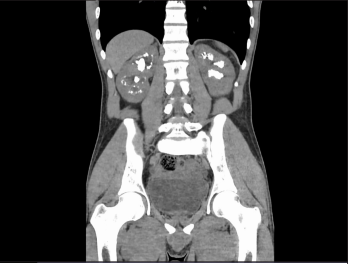Distal renal tubular acidosis (Type 1 RTA) is an acid-base disorder characterized by impaired urinary acidification by the distal tubule. Osteomalacia, rickets, nephrocalcinosis, nephrolithiasis, and electrolyte imbalance can be seen in these cases. We report the case of a 24-year-old male patient who had low back pain with a history of nephrolithiasis. Routine laboratory results revealed mild hypokalemia and hyperchloremia. After percutaneous nephrolithotomy surgery, he developed muscle paralysis with a serum potassium level of 1.3 mEq/L. After intensive treatment of hypokalemia, the patient had normal anion gap metabolic acidosis, high urine pH, high transtubular potassium gradient, nephrocalcinosis, and hypercalciuria and was thus diagnosed as having distal RTA. After stabilization of the patient, he was discharged with oral potassium, bicarbonate, and spironolactone medications. Hypokalemia and hyperchloremia in a patient with a history of recurrent renal stones should be kept in mind for a possible distal RTA diagnosis. Prompt diagnosis and treatment of this situation not only reduces the formation of renal stones, but also may be lifesaving in rare cases.
Cite this article as: Gökalp C, Bahçeci T, Otman E, Doğan F, Güner M, Duman S. Life-Threatening Hypokalemia Presenting with Paralysis after Percutaneous Nephrolithotomy in a Patient with Nephrolithiasis: A Case Report. Turk J Nephrol 2020; 29(2): 174-6.

.png)

.png)

.png)

